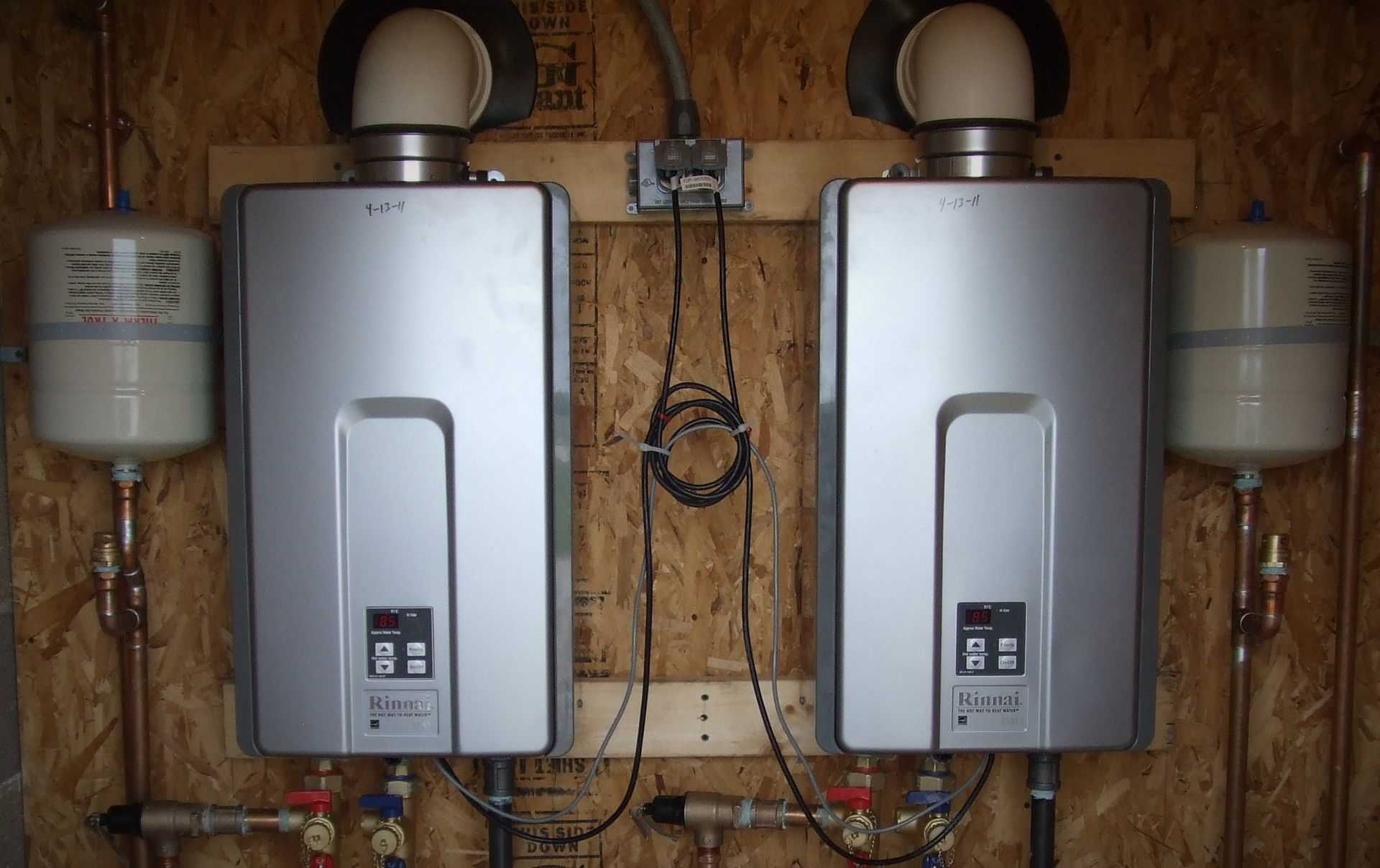How to Install a Tankless Water Heater
Contact us today to experience prompt and reliable plumbing solutions.
Effortless Tankless Water Heater Installation: A Step-by-Step Guide for Energy-Efficient Home Comfort
Welcome to our comprehensive guide on tankless water heater installation, where we demystify the process to empower you with the knowledge needed for a seamless setup. Achieving energy efficiency and optimal home comfort begins with the proper installation of your tankless water heater. In this step-by-step guide, we'll walk you through the process, providing valuable insights and expert tips to ensure a successful DIY installation.
Whether you're a seasoned DIY enthusiast or a first-time installer, our guide is designed to make the process effortless, allowing you to enjoy the benefits of a reliable and energy-efficient hot water system. Let's embark on the journey to elevate your home's comfort and sustainability.
Benefits of Tankless Water Heaters
1. Energy Efficiency and Cost Savings
Embracing tankless technology translates to significant energy savings. Unlike traditional water heaters that continuously heat and store water, tankless units only activate when hot water is needed. This on-demand operation eliminates standby heat loss, resulting in lower energy consumption and reduced utility bills. By efficiently using energy, tankless water heaters contribute to a more environmentally friendly and cost-effective home.
2. Continuous Hot Water Supply
Say goodbye to the inconvenience of running out of hot water. Tankless water heaters provide an uninterrupted flow of hot water whenever you need it. Whether you have a large family with simultaneous hot water demands or you simply enjoy long, luxurious showers, a tankless system ensures a consistent and endless supply of hot water. This feature enhances comfort and convenience, especially during peak usage times.
3. Space-Saving Design
The compact and wall-mounted design of tankless water heaters is a game-changer for homes with limited space. Traditional water heaters with large storage tanks can take up valuable square footage, but tankless units are space-efficient and can be installed in tight spaces, such as closets or utility rooms. This not only maximizes your living area but also provides flexibility in unit placement, giving you more options for installation throughout your home.
In summary, the benefits of tankless water heaters extend beyond mere functionality; they offer energy savings, a continuous and ample hot water supply, and a
space-saving design that aligns with the demands of modern living.
Pre-Installation Preparation
Embarking on a tankless water heater installation journey requires careful pre-planning to ensure a seamless and efficient process. The pre-installation phase involves three critical steps that lay the groundwork for a trouble-free experience:
1. Assessing the Installation Location
Before you begin, evaluate the chosen installation site. Check for compliance with manufacturer guidelines regarding clearances, ventilation, and accessibility. Consider proximity to gas or electrical connections and ensure there's ample space for proper ventilation. Taking the time to assess and choose an optimal location is pivotal for the long-term efficiency and safety of your tankless water heater.
2. Gathering Necessary Tools and Materials
Equip yourself with the right tools and materials to streamline the installation process. Create a checklist including items such as pipe wrenches, tubing cutters, a drill, screwdrivers, and any specific components recommended by the manufacturer. Having everything on hand before you start ensures a smooth workflow, minimizing disruptions and allowing you to focus on the task at hand.
3. Checking the Electrical and Plumbing Systems
Conduct a thorough examination of both the electrical and plumbing systems in your home before installation. Ensure the electrical supply meets the unit's specifications. For gas-powered units, confirm the gas line is appropriately sized and in good condition. Check for any plumbing leaks and address issues beforehand. This proactive approach ensures a safe and efficient installation process.
By diligently completing these pre-installation steps, you're establishing a solid foundation for the successful installation of your tankless water heater. This strategic preparation not only aligns with safety standards but also contributes to the long-term performance and reliability of your new water heating system.
Step-by-Step Installation Guide
Installing the Water Heater Unit
Placement Considerations
When determining where to install your tankless water heater, consider factors such as proximity to the primary water source, gas or electrical connections, and the demand points in your home. Follow manufacturer guidelines for clearances and ventilation to optimize performance and ensure safety.
Securing the Unit
Once the ideal location is identified, securely mount the tankless water heater using appropriate brackets or mounts. Ensure it is level and stable, minimizing any risk of movement during operation. A well-secured unit contributes to both safety and longevity.
Connecting Water Lines
Connect the water lines following the manufacturer's specifications. Use quality materials, such as stainless steel or copper tubing, to prevent corrosion. Pay careful attention to the correct alignment of the inlet and outlet connections, and use fittings and valves as needed. Thoroughly check for any leaks before proceeding.
B. Electrical Connections
Voltage and Amperage Requirements
Confirm that your electrical supply meets the voltage and amperage requirements specified by the manufacturer. This information is crucial for the safe and efficient operation of the tankless water heater. If uncertainties arise, consult with a qualified electrician to ensure compliance.
Wiring the Unit
Carefully follow the wiring diagram provided by the manufacturer. Securely connect the unit to the power source, avoiding any loose connections. If the installation involves hardwiring, adhere to local electrical codes and guidelines. Double-check the connections before proceeding to the next steps.
C. Ventilation Setup
Venting Options
Explore the venting options suitable for your tankless water heater model. Options may include direct venting, power venting, or concentric venting. Select the option that aligns with your home's layout and meets safety requirements. Refer to the manufacturer's instructions for specific guidelines.
Proper Vent Installation for Safety:
Install the chosen venting system meticulously, ensuring proper clearances and a secure fit. Adequate ventilation is critical for the safe operation of the unit and the dispersion of combustion byproducts. Regularly inspect the vent system for any blockages or signs of wear.
D. Testing and Troubleshooting
Initial System Testing
Before putting your tankless water heater into full operation, conduct thorough initial system testing. Check for proper water flow, monitor the heating performance, and verify that safety features are functioning as intended. Address any issues promptly to avoid complications later on.
Common Troubleshooting Tips
Equip yourself with troubleshooting knowledge to address potential issues efficiently. Be familiar with error codes, if applicable, and consult the user manual for guidance. Common troubleshooting areas include water temperature inconsistencies, ignition failures, or error messages on the unit's display.
By meticulously following these installation steps, you ensure a successful and efficient setup of your tankless water heater, promoting both safety and optimal performance.
Safety Tips and Considerations
1. Importance of Following Manufacturer Guidelines
Always adhere to the guidelines and recommendations provided by the manufacturer. These instructions cover critical aspects such as installation procedures, clearances, venting requirements, and maintenance guidelines. Straying from these guidelines can compromise the efficiency, safety, and warranty of your tankless water heater.
2. Potential Hazards and How to Avoid Them
Familiarize yourself with potential hazards associated with water heater installations. Be cautious of gas leaks, electrical issues, and water leaks, addressing them promptly to prevent accidents. Prioritize safety by using proper tools, following industry best practices, and wearing protective gear as needed. If you encounter unfamiliar situations, seek professional assistance.
3. Ensuring Proper Ventilation and Clearances
Proper ventilation is critical for gas-powered tankless water heaters to expel combustion byproducts safely. Follow the manufacturer's specifications for venting options and ensure clearances are maintained around the unit. Adequate airflow prevents overheating and ensures the unit operates efficiently without posing a risk to your home's occupants.
Additional Safety Considerations:
- Install a carbon monoxide detector in proximity to the unit to alert you to any potential leaks.
- Regularly inspect and clean the venting system to prevent blockages and ensure proper airflow.
- Keep the area around the water heater clear of flammable materials and combustibles.
- If unsure about any aspect of the installation, consult with a qualified professional to guarantee a secure setup.
By prioritizing safety and diligently following these guidelines, you contribute to a secure and hazard-free environment, allowing you to fully enjoy the benefits of your tankless water heater with peace of mind.
Finalizing the Installation
As you approach the completion of your tankless water heater installation, meticulous attention to detail becomes crucial. Double-check all connections, ensuring they are securely tightened to prevent potential leaks. Following this, conduct a comprehensive final system test to validate proper water flow, heating performance, and the accurate functioning of safety features.
This thorough evaluation serves as a crucial step in guaranteeing the seamless operation of your tankless water heater. Additionally, equip yourself with troubleshooting knowledge to swiftly address any common issues that may arise during the testing phase, ensuring that your newly installed system is not only efficient but also ready to meet your household's hot water needs reliably.
Conclusion
In conclusion, your journey to install a tankless
water heater is marked by careful planning and precise execution. Recapitulate the importance of following guidelines, ensuring safety, and embracing the efficiency of your newly installed system. Now that you've successfully navigated the installation process, it's time to relish the continuous hot water supply, energy savings, and space-efficient design that your tankless water heater brings to your home.
Easy Step-by-Step Guide on Installing Tankless Water Heaters

Streamline your installation process with our easy step-by-step guide on installing tankless water heaters, empowering you with a hassle-free journey to efficient hot water solutions.
Water Heater Acting Up? We've Got the Answers! Explore Our FAQs.
Explore Our FAQs for Water Heaters: Find Solutions for Common Issues.
